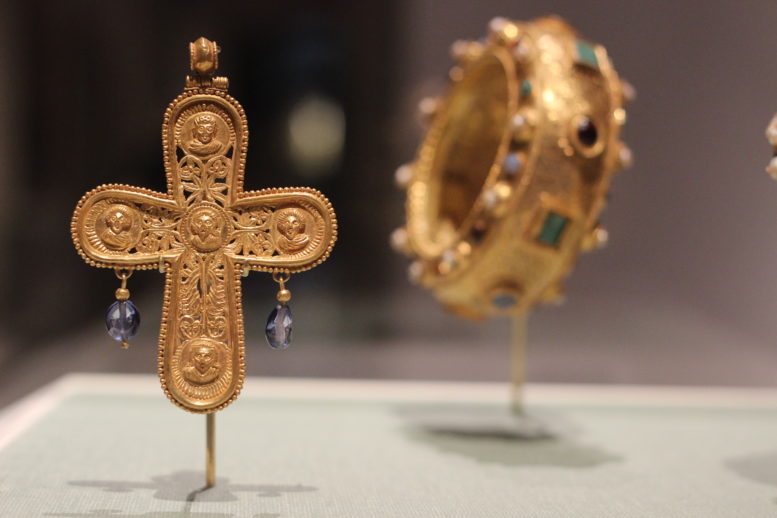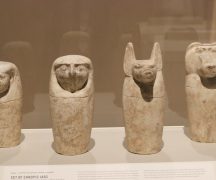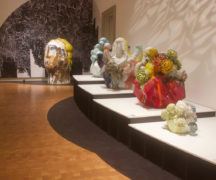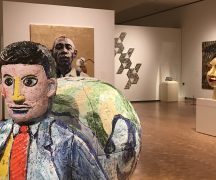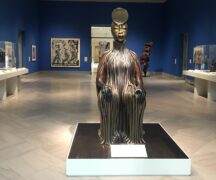By DAVID DUPONT
BG Independent News
The Toledo Museum of Art’s new exhibit Glorious Splendor” comes in a small package.
Don’t let that fool you. The 27 objects dating from 200 to 700 A.D. tucked into the museum’s Gallery 18, live up to the grand title of the show. They are a dazzling array of gold and silver object encrusted with jewels that draw the visitor in with their intricate detail.
The objects, both sacred and secular, have historical significance that matches their physical beauty.
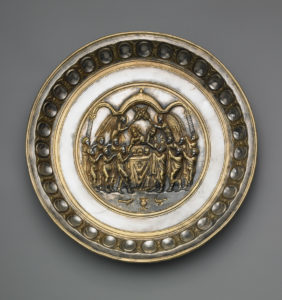
Paten depicting the Communion of the Apostles. (Photo provided)
“Glorious Splendor: Treasures of Early Christian Art” will be on exhibit through Feb. 18. A few of the items are from Toledo’s own collection but most are from private collections in North America, which curator Adam Levine has brought together for this exclusive exhibit. Once the show closes the objects will be returned to their owners.
“If you do not see this show, you’ll never see them again,” Levine said during a press preview last week.
Levine, the museum’s associate director and associate curator of ancient art, said he’d developed relationships with the private collectors. It took about a year to pull the show together. “The donors just want to make sure their objects look as beautiful as they can,” he said. The pieces have been at the museum of several months so custom mounts could be made to show them in the most advantageous light. Levine did further research about each piece, so the donors learn more about their objects.
The museum’s reputation for collecting “only the highest quality works” and maintaining that high standard in its exhibits is also important to the donors, he said. “Collectors are honored when we tell them their collections are the same caliber as our permanent collections.”
The period covered by the exhibit is one of great historical significance, as the Roman Empire, evolved from a pagan entity to a Christian one. While scholars have written extensively about it, Levine said, it is difficult to bring together objects that tell that story.
That’s the mission of “Glorious Splendor.”
“The theology of early Christian Era was very unsettled. … There was a lot of debate about the nature of Christ and the nature of the gospels.”
Some objects depict Roman gods and heroes. Others celebrate the emperor. And others feature the iconography of emerging Christianity.
“Christianity emerged out of a cultural matrix, images of emperors and non-Christian deities were still being produced and still being circulated,” he said. So Christian artists drew on the aesthetics of pagan iconography to illustrate Christian beliefs.
“There are a lot of continuities, a lot of similarities, in the ways artists produced and the type of imagery used,” Levine said. “This exhibit really takes that continuity as its focus. The collectors were really interested in having their objects used to tell that story.”
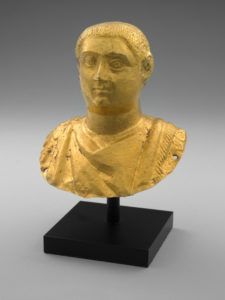
Gold Bust of Licinius II (Photo provided)
Two objects have particular historical significance, he said.
One is a gold bust of the emperor Licinius II, who succeeded Constantine and was a crucial figure in moving the Roman Empire toward Christianity. This is the only portrait of Licinius.
The second is a silver paten, or plate, used in worship showing The Communion of the Apostles.
The paten has a double image of Christ serving communion to Paul and the Apostles in a church setting. Dating from about 550 A.D., the paten is the earliest depiction of this image.
While the objects impress at first glance, they reveal their beauty the more they are studied. The museum is providing monoculars for visitors to use to magnify the details.
“The best way to experience this is to give yourself time to really appreciate the level of detail and workmanship,” Levine said. “These inspire wonder the deeper you look.”

